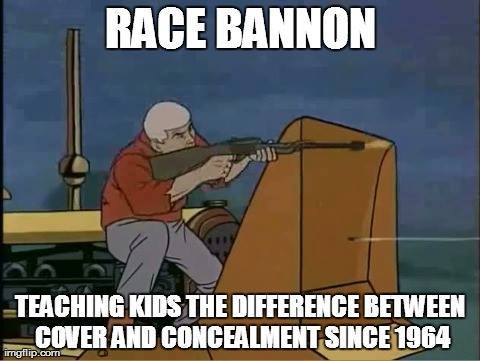|
|
||||||||
|
Search NNSD In This Hub: Adrenal Decay Adrenal Stress * Aftermath of Violence Alpha Behavior Angles Bullies* Distance (range) Economy & Stress Violence Effective Movement Failure To Perform Fear Freeze Response * Five Stages of Violent Crime* High Risk Behavior Kinds of Violence* MA/SD/DT Training Mental Preparation Normal, Abnormal, Dangerous Provoking An Attack* Pyramid Personal Safety Respect Self-Defense* SD Training Shadow Dancing Shortcuts & Cheats Survival Mindset Unintended Consequences Unnecessary Movement Violence Geeks Blog Weapon Disarms Western Ethics and SD Knife Fighting Hub Legal Hub Martial Arts Hub Psychological Survival Hub Rape Hub Robbery Hub Self-Defense Hub Street Fighting Hub Violence Profession Hub NNSD Home Page Donate to NNSD
Marc MacYoung?
Non-Fiction
|
Ever notice all those fantasy gun disarms are for when the
guy What Do I Do When Someone IS Shooting At Me?
On this page:
The most accurate answer to the question of 'What do I do ...?' is "It depends" By that I mean it depends on where you are, who you are, who is doing the shooting, why the shooting is happening, who's with you, what options you've chosen and most of all your mindset. Does that sound complicated? It's not. Those are pretty simple questions. Where it can get complex depends on the answers. With most combinations of answers, the solution is simple: Run fiercely. Other times that's not exactly an option. Still other times you're going to have to fight for that option. Worst are the times where you'll have to stay and fight. What we're going to cover here are the factors to determine which is the best option for the circumstances you can find yourself in. Let me start with some good news and some bad news. First the good: Unless you live a particular lifestyle and behave a certain way, the odds of someone trying to shoot you (personally) are rare. The bad news is the most common way to find yourself at a shooting is being in the same area as a person who is being shot at. Basically, it's not personal, it's proximity to the target. At the back of the line of possibilities is you're somewhere that someone is shooting at everyone. Still even knowing that, there are factors and combinations you have to be able to assess to come up with the best solution. Starting with being able to determine if you THE target, a target or just in the wrong place at the wrong time. How do you do that? Well, this is a long page. So get yourself a cup of coffee. Mass Shooting, Active
Shooter and Targeted Attack. The reasons there is not a universal definition are
two-fold The reason this is important is someone can rightfully
say there were no 'mass shootings' in a State for a given
year or claim– just as rightly– there were 460 in the same
state for the same time. Mass shooting used to have a pretty clear
standard set by Federal Law Enforcement and legal (FBI, DOJ,
DOHS, BJS etc.), "A shooting incident where four or more
people die excluding the shooter." With just numbers it didn't matter the reasons for or who was involved in these shootings. Then the Feds starting splitting hairs. They did this by adding exclusions that lowered the numbers even more. For example the low-investment-high-yield strategy of handing local malcontents money for 'assault rifles' isn't counted as mass shootings anymore. It's counted as a terrorist attack and not included in mass shootings. Later different agencies starting jiggling definitions excluding family murder/ suicides and criminal activities. (These are actually the majority of "four or more dead.") With these exclusions you've pretty much reduced the definition of a "mass shootings" to a lone gunman at a school or theater. Which as I said earlier could mean zero 'mass shooting ' incidents in state – even as gangbangers shoot up parts of the city. But to really start screwing things up you need academics, lobbyists and agenda pushers – especially if you have an anti-gun agenda. Here are two of the more reliable sources.
Notice how standards are getting broader to boost incident numbers? The other trick is to lower the standards of dead and wounded. I've run across an anti-gun source that counts spousal murder/suicides as 'mass shootings' to inflate numbers. According to them, it's 'mass' because two people died. Counting that way allows some sources to claim nearly five hundred mass shootings before the middle of the year. If they span a decade it allows these organizations to claim US mass shooting incidents number in the thousands and victims in the tens of thousands. It's amazing you can walk down the street with all the bodies laying around from gun violence. < /sarcasm > What's not officially tracked (or if it is, the numbers aren't made public) is motivation. The sad truth is even just using the Federal definition a significant number of mass shootings are family murders/suicide. Often dad blows a gasket and takes out the entire family and then himself. Exact numbers vary year-to-year, but from one third to one half is common for these mass shootings. While this is not uncommon in cases of separation, these happen while the family is still together more than we're are comfortable thinking about. (What is not uncommon is ex shows up at wife's work to shoot her and takes out some of her co-workers. This is both the leading cause of death of women at work and categorized as "Workplace Violence." ) The bulk of the remaining four-or-more-body incidents are usually crime/ drug/ gang related. This comes back to agendas. This isn't just a robbery gone wrong. While it could be a gang fight, it's often the shooters enter and kill everyone in a building (e.g., a crack house). If you're not in the drug trade or hanging out with criminals you're pretty safe from being part of this kind of mass shooting. If you want to push the numbers down (as many city fathers want to), you exclude these homicides from your calculations of mass shootings. Instead you label such shootings as 'criminal violence.' Then there comes the workplace shooting where a disgruntled ex-employee returns and opens fire. Finally bringing up the rear of mass shootings, you get shooters at schools. Something about these last two that is not really talked about. That is often these individuals do have some specific targets in mind at those places. (As was alluded to earlier.) The other casualties either tried to stop the shooter or were just nearby when the Loco decided to keep on shooting. Here's another point, while a mass shooting can be caused by mental health issues and stress, they don't have to be. Killing everyone in the room can be a cold, calculating criminal decision (e.g., The St. Valentine's Day Massacre). This whether everyone is a member of a rival group or to make sure there are no witnesses to testify. That's not mental illness, that's a tactic. A tactic where the shooter(s) often leave the area when the job is done. The take away here is that mass shootings are usually specifically targeted at a group. (Occasionally it's two groups shooting at each other.) If you're not in that group you're not a target. You might get shot if you hang around, but do you really have a reason to hang around? Active shootings are defined by the Dept of Homeland Security as,"...an individual actively engaged in killing or attempting to kill people in a confined and populated area; in most cases actives shooters use firearms and there is no pattern or method to their selection of victims." There are three key points there. First, the time issue. Notice the 'ing' suffix in the definition. Basically after an active shooting event is done, then it technically becomes a mass shooting. This is another reason why people can play fast and loose with the definition of mass shootings. A mass shooting is usually a crime scene. Active shootings are when there's lead in the air. That distinction is really important when you're there and it's happening. Second the way the term is used implies an active shooter is shooting at everyone. These are spree killers and terrorists. If the shooter sees movement, he's shooting at it. (The Mandalay Bay/Las Vegas shooting). Using these standards, active shootings are actually much rarer than mass shootings. Yes, they are often ideologically driven, but more common is mental health issues and stress. (Contrary to what you've been lead to believe most people with mental issues alone are not violent.) This is the classic shooting at strangers. Third, most active shootings are ended with guns. Stop, reread that. It's important. Very seldom does the shooter survive. It's very rare to see an active shooter in handcuffs. Now whether the active shooter ends up being taken down by someone else or -- having no more targets -- shoots himself depends. Ideologically driven shooters are usually taken down. Mentally imbalanced spree killers often suicide when they run out of targets or encounter resistance. Any way you look at it, it almost always ends with a bullet. A Targeted Attack is not an official/agenda driven term. It is however an important factor. Who's the intended target? Is it you? Is it someone else? Here's why that's important: With targeted attacks the bullets tend to be going in one direction, towards the target. If you're not the target or standing behind or next to that person, you're actually pretty safe. A targeted attack doesn't have to injure
or kill multiples. But it can–especially if the
target is a group. (Think of the Pulse Night Club
shooting.) But that's way more rare than people
think. Most targeted attacks are against an
individual. Unfortunately, A targeted attack against an individual that results in multiple victims can be the result of strategy (e.g., a drive-by to get someone in a crowd) or just plain old bad aim. A third possibility is the target runs. This turns a line of fire into an arc of fire (that you don't want to be in). That is why more than just the target is at risk of getting shot. In the gang parlance of the '90s innocent people who caught stray bullets were known as 'Mushrooms.' (they just popped up and got mowed down.) The reason they were shot is basically proximity to the target and bad aim. It really sucks when two individuals are shooting at each other and behind both are getting hit. Knowing these distinctions are very important for
coming up with the right answer when there's lead in
the air. Starting with the most important
question of them all.
What Happens When Someone really IS trying to Kill
You Rather than try to tell you all about how much violence I've been in, I'll tell you the last time I was shot at was 22 years ago. That's a new record for me. In my entire adult life (I'm 58) I have never gone that long in between shooting incidents. I was 14 the first time I was shot at. I tended to average between two to five years between incidents. And that doesn't count the times I was in the area when lead was in the air, but aimed at someone else. What you may not realize about this is I developed a distaste for people who get slapped around and then turn around claim the person was trying to kill them. Been there, done that ... NOT the same. Not even in the same ballpark. But man will they tell you all about their trauma drama from the experience, that they're survivors, and how dangerous it was. To combat this hyperbole, I
came up with a list of the six most common results when
someone IS
trying to kill you. They are: If those weren't the results, then the person WASN'T trying to kill you -- no matter WHAT you want to believe or tell others. In a similar vein, just because someone is waving a gun, that isn't the same as them shooting. And– in a bit you'll see why this is important– just because you're in an area where someone is shooting doesn't necessarily mean they're shooting at you specifically. If there's a gun spitting lead, it's safe to assume the
person is trying to kill. The question is "Who?" If not you
then someone else. People intending to kill you usually
don't stop until The importance of that is simple: People who are trying to kill someone else don't really care about you unless you get in their way. Someone who is trying to kill you specifically will be more dedicated to that task than someone intent on killing someone else or anybody in the area. This strongly effects what your options are. That is why you must look at what happens before it becomes physical -- even with weapons. Because what is going on before the weapon is drawn and what occurs while the weapon is displayed is critical for assessing what is the best course of action for you. A threat display or the different kinds of violence are NOT someone trying to kill you! Can they escalate into physical violence? Yes. Can it go from a simple assault to an aggravated assault? Absolutely. Can they result in death? Yes (Especially if you try to counter a weapon-based threat display with one of your own). Can you catch a bullet meant for someone else? Oh hell, yes. However most violence is NOT about killing. It is about achieving a goal. And this includes someone displaying or brandishing of a weapon. The 'reason' to brandish is so that person doesn't have to use it. Although 'brandishing' is illegal in most states, the intent is usually to show how serious someone is about their demands. If the goal is to kill, he (or she) will just pull it and start putting lead in the air. I often say that 'I am negotiating until I pull the trigger.' The importance of this concept cannot be stressed enough. VERY SELDOM does someone 'just pull a gun and shoot.' Communication is the norm. While it is possible that the shooter is working his way up to shooting by talking, it is far more common that he is communicating so he doesn't 'have' to shoot. But, people caught up in their emotions about being in conflict don't look at it this way. In fact, because their monkey brains are driving the bus, they overlook the fact that MOST violence comes with instructions on how to AVOID it! Read that last sentence again, it's important.
While this may sound obvious, the problem is that in conflict, when people are functioning in their Monkey they are NOT making rational decisions given the danger. Wait, what? What monkey? That's what we call the parts of your brain that control our social and emotional behaviors and 'thinking.' Rather than go into the complexities of how your brain really works, it's easier to refer to this part as "The Monkey." Being as we are social primates, in your everyday life these parts are a very powerful and useful influence. In a life-and-death crisis? Not so much. Included in the list of not intelligent decisions if you're not directly involved, but think you're watching it on TV. I'm not joking that I've seen people stand there and watch when someone is waving a gun and screaming at someone else. Or think that getting your phone out and filming is a good idea. (Again, I've seen it happen. Lookie loos are more common than ' freezing.) In conflict, the monkey brain is more concerned about emotions, feelings, pride, status and, most of all, winning than anything else. As such, when someone is threatening you with a weapon, the monkey brain is famous for saying things like "You don't have the guts." I really wish I was joking about that. Or the New York actress Nichole DuFresne, whose last words to the mugger were "What are you going to do? Shoot us?" That was her mouth writing checks... Or to be more accurate, that was her monkey brain trying show that person with a gun that she was really upset and not afraid of him or his little gun. Not to put too fine of a point on it, but the monkey brain is great at getting you into danger, but it sucks at getting you out of it. By danger we mean physical danger, not conflict. Not your monkey fear of losing status, getting your feelings hurt or humiliated. It's usually your monkey brain that gets you into conflict, drives the conflict -- and this is the weird part -- both tells you you are in danger and at the same time ignores the actual danger. On one level (social and self-esteem) the Monkey will convince you this is Armageddon. At the same time it will keep you yelling and screaming at someone ... when you should be either running, preparing to fight for your life or changing your behaviors. And that's all BEFORE you get to point where the trigger being pulled. Functionally, you have floated from where the perceived 'dangers' are to emotions, status and your pride to a point where there is physical danger. The problem is the Monkey is more concerned with its fears to these other issues. It's as though it's saying: Sure there's some physical danger, but that's not nearly as important as showing this other monkey I'm right. In fact, it is not uncommon for the Monkey to view a brandished weapon as a bluff. A bluff that the Monkey feels it must call if it is to 'win.' Your behavior at this stage has MAJOR INFLUENCE on whether or not bullets come out of that gun. We cannot stress enough that the smart course of action is do to everything in your power to keep the bullets in the gun -- even if that means swallowing pride. If you don't have experience functioning under adrenal stress Do Not Think you have this under control. Without some kind of training or experience, you may indeed freeze, but you're more likely to do something like Nicole DuFresne. So, are we to the 'what do you do when someone is shooting' part?
Change Bus Drivers We're at the point where the first trigger pull is two seconds or less away– or there is a bullet in the air already. At this junction, the first thing you need to do is kick the Monkey out of the driver's seat. When it comes to being shot at, the Monkey can be a problem in one of
two ways. Third– again a very useful strategy in everyday life, but not so much
in a crisis– our Monkey looks for a social solution to a problem. While
this happens, you're standing still. So while the same process
that helps you decide which fork to use is good at a dinner party, it
will get your brains blown into a fine pink mist in a shooting
situation. That goal isn't something the Monkey is good at.
Not only did it get you into this mess because of its desire
to 'win,' but when someone attacks you, the Monkey tends to
freeze as its gears grind. The weapons of the Monkey are
words and threats. It sucks at physical fighting and it's
even worse at surviving when it's pissed someone off enough
to want to kill you. When you are physically assaulted after your Monkey's plan has failed, odds are against you swinging into serious kung fu action. Most people either keep on trying to engage in monkey brain behaviors (screaming and threatening) OR they are overwhelmed by the assault. Except when the attack involves a weapon, then they bleed, often die. It's time for the lizard brain to take over. (Besides, odds are the monkey brain got you into this mess in the first place.) Unlike the monkey brain, the lizard brain is not concerned with your pride, status or emotions ... it's goal is survival. That is what it's geared towards. And when the fecal matter is hitting the oscillating blades, that's who you want driving the bus. Two good ways to understand the different level of functioning were supplied, first by Ferran Bassols who said: The monkey brain says "I'm more important than this guy. While the lizard brain says "DUCK!" Josh Amos who said: This guy might try to shoot me vs. HOLY S**T! HE'S SHOOTING AT ME! In both examples, the danger has shifted from a possibility to a reality. There is a very big difference The problem is that modern life does not afford most the ability to drop into this part of their consciousness. It might help if you imagine bridges between the parts of your brains. So-called 'civilized people' tend to have not just big bridges to get from their human brain (rational/neo-cortex) to their monkey brain (emotional/primate/limbic system), but lots of bridges. Think river or freeway crossings in the city. That means they can easily slip into their monkey brain (1). However, the 'bridge' to their lizard brain is one of those rope and slat bridges you see in jungle action movies. Or, if you're more urban in your thinking, the lizard brain is considered a bad part of town and most people have only one bridge to it. They don't spend much time there or know how to get there. The challenge you face is getting across that bridge and into the lizard brain BEFORE you get shot. Once you drop into your lizard brain, you are no longer concerned with monkey brain issues. Those are now officially, out the window. There are no more instructions about what to do to avoid violence, there is no more threat of violence; the bullets are flying. BTW, there is some argument that freezing is the result of a person being incapable of allowing their lizard brain access to the steering wheel. Rory Miller and I have a discussion on the possible causes of freezing and how to overcome it. When there are bullets in the air, you need to be acting, not worrying about how you feel.
When Someone Is Shooting... No? Then is he specifically shooting at someone else? (And bullets are mostly flying in one direction.) Or is he an active shooter? (He's just shooting at everyone) These three scenarios will have a lot to do with what is your best strategy. The first one is a lot more complicated. The reason it is more complicated is it's usually personal. That person is shooting at you because of your actions. Actions that lead to the shooting. He's there to punish you and usually won't stop until one of the six results of when someone is trying to kill you are achieved.(2) As you move, he'll adjust his aim to keep you in the line of fire. In the last two scenarios, however, most people's
primary goals need to be When the shooter is shooting at someone else or just randomly shooting people, odds are, the he's going to be too busy to follow you. But all in all, A-C are pretty good default strategies for your lizard brain to implement. What he's aiming at could be close to him or halfway down the slice ... it doesn't matter. The bullets will still be traveling down that pie slice until they hit something or run out of juice. While running away will help some, you gotta get off that pie slice ASAP. That is why who's he shooting at is so important. If he's shooting at someone else, or everyone, there's a good chance he won't move to put you specifically back into the pie slice. The down side is the person who is the target, might do it for you. If you're both running to the right, that pie slice will follow you. Another consideration here is: How close are you to the shooter? Notice the three arrows in the picture. If the shooter doesn't aim correctly -- even though he is trying to shoot the target, there is a good chance of missing. In fact, two of the three arrows would miss the target in the illustration. That's why we use a pie slice to show this. A problem with someone shooting at you isn't the size of the bullet, it's the size of the target you present within the pie slice. For example, look at the illustration above. If you go side to side, at the range/distance the target is shown from the shooter means the target is filling about 1/3 of the pie slice. (You could write 'target' three times across where it is on the pie slice). If you move the word 'target' up close to the shooter (right in front of the three arrows), even with variation in aim, there's a good chance of getting hit. Because when it's that close, the word target covers most of the lateral area. On the other hand, if you move the word 'target' to the top of the illustration, it would only fill about 1/6 of the possible area the bullet could go (due to bad aim). So the further away you are from the shooter -- even on the pie slice -- the less likely you are to get shot. Incidentally, we did the math on this and discovered that at 15 feet a pistol canted just FIVE degrees will miss a human sized target. We then went out to the shooting range and confirmed this. Aim at the X and then bend your wrist just a bit so the gun barrel moves about five degrees You'll hit the paper, but you won't hit the silhouette. The greater the distance, the less the degree needs to be to entirely miss the target. The further the target is from the shooter, the bigger the possible area the bullet can go -- and the greater the chances of him missing. This is why -- even though it isn't an optimal strategy -- even running straight away from a shooter can save your life. As can hunkering down as you run. Thereby making yourself a smaller target. The smaller target profile you present, by both distance and crouching, the greater his chances are of missing. That having been said, you still want to get off the pie slice ASAP. The second set of factors determining what to do: Are you inside or outside? And then you have to ask, are you outside in a wide open area or are you in a place where there is cover and concealment? There's a difference between these two. I address them in a "Tools for Writers: Don't get your character shot" piece I did ( see below). For the record, the faster you can put a building between you and a shooter the better you'll be. If you are inside with an active shooter, get outside NOW!!! A whole lot of people who get killed in school shootings, workplace shootings and spree shootings die because they crouch down behind something and the shooter walks right up to them. They don't see him coming because the same thing that hides them from his sight, blocks him from theirs. Don't hide behind doors or in closets. Head for the exit. If you have to throw a chair through a window to make an exit, DO IT! Getting into another room will give you time to open an escape route. The other thing to do when exiting an indoor shooting situation is DON'T STOP! Keep going. Not only does this lessen the chances of you getting shot by the original shooter, but you being gone makes the decision of who the first responders are going to shoot much easier. And that includes keeping you from being accidentally shot by the responders. As a side note, many schools and organizations have some short-sighted policies in this regard. People are commonly told to exit the building and wait outside in a designated area. The reasoning for this policy is the concern that if you run, they won't know if you're safe or not. Our attitude is: That's what cell phones are for. Once you are out of there, keep going, then CALL YOUR LOVED ONES and tell them you are alright. If you don't do this, then your loved ones will be calling -- or worse -- rushing to the site to see if you are safe. People milling around a shooting scene (waiting for instructions from management, administration or teachers) not only increases the difficulties for first responders, but also leaves you in danger from the shooter. If you can escape through a window, he can shoot out of one too. So forget any policy that -- while convenient for the school/organization increases your danger. If management is concerned about your well being, then have them set up a hotline to call in case of emergencies. Add to this that employers, teachers, ministers and most other authority figures probably don't have much experience getting shot at either. So they're just as likely to be as freaked out as you are. While getting shot because you made a bad decision sucks, getting shot because someone else made a bad decision really sucks. (We'll return to this idea in the shooting back section). If you are outside, get inside. But more than that, don't just run into a building and then stop and watch what is going on (we call this Prairie Dogging). Enter a building and keep going out the other entrance. This not only gets you out of the pie slice, out of view of the shooter, but a building makes pretty good cover. If you are outside in a wide open space (where there is no cover or concealment) RUN! Put as much distance between you and the shooter as possible. Remember what we said about distance from the shooter to the target? Make the distance as great as possible. Often you will find yourself in an outdoor situation that is a blend between open space and offering cover. In these situations your best bet is to utilize cover and concealment AND buying distance. You don't just duck and cower behind a car. You put the car between you and the shooter and run using the car to cover your escape. As mentioned earlier, I'm a big fan of making yourself a smaller target by hunching over as you run (3). Ducking down and running between parked cars in a parking lot or behind a row of cars on the street But perhaps the most important thing is knowing what NOT to do. Do NOT Prairie Dog! When someone is shooting do not stand there like a prairie dog and look to see what is happening. The sound of repeating gunfire tells you everything you need to know. Not only does this make you a stationary target, but by standing, you put yourself on the same eye level as the shooter. That means HE is more likely to see YOU! In NO case do I recommend just ducking down behind either cover or concealment and trying to hide. As so many kids in Columbine, Virginia Tech and other spree shootings have discovered, the shooter can just walk up to you then shoot you. No matter how much you beg and plead. The answer is almost always: Get out! Get out! Get out! (4) And if you can't get out, make it so he can't get in (Go read Alain's book for that.) Going back to when it is personal. Another set of consideration is: Is this person just pissed at you or is he really trying to kill you? Basically this boils down to what is he willing to risk to see you dead? The reason is that the pissed off person might fire a round or two at you before turning and running off or stopping shooting. But that is usually because he's achieved his goal of changing your behavior or venting his displeasure. Often if the guy wants you dead, but not at any expense to himself, if his first attempt to get you fail, he won't chase you and he will limit the number of shots he takes. For example, he's willing to shoot you with no witnesses around. BUT while he wants you dead, he doesn't want to be seen chasing you down the street. The reason being because of the danger to him. Witnesses mean prison. Another version is that while he's willing to kill you, he doesn't want you dead bad enough that he is going to risk you retaliating or someone else doing so. His game plan is you dead, him alive and unhurt. You will see this behavior quite often in drive by shootings. Where as long as they are the only ones shooting they will fire, but when return fire occurs they skeedaddle away. This incidentally was what happened during my last firefight. When I started shooting back, he decided he didn't want to play anymore. On the other hand, if the guy is committed to killing you, then odds are he will continue to try to get you back onto that pie slice and close enough that he can pump multiple rounds into you. This is where those six results of someone really trying to kill you will manifest.
So You Got Shot Whether this is an apocryphal ' lie to children' or is based on reported incidents it, introduces you to an important concept. MOST of what happens when you are shot is based on what you expect to happen when you are shot. If -- after watching countless movies and TV shows where someone gets shot and falls down helpless -- you believe that is what happens, that is what you'll do. If, on the other hand, you believe you can keep going after you've been shot (or don't know that you've been shot) then you can keep on going. The cops/bad guy example is not saying that criminals are some kind of supermen. It's just that escape plans tend to blot out other considerations. He still functions because he feels the need to function beyond having been shot. Simply stated, many people who don't know they have been shot describe it feeling like they have been punched. It isn't until they realize they have been shot that they begin to lose functionality. This is a critical component for your survival if you are shot. First off, speaking to an ER doctor, he confirmed the common numbers given about gunshot survival rates. If you get to an ER room with a single gunshot wound, you have about an 80% chance of survival. And that is within TWO HOURS! Yes, you read that right. Two hours. While it's not a 'you're shot so what?' issue, it doesn't mean you automatically fall down and die. The sooner you get medical treatment the better your chances. To do that you need to keep moving. If you trip, get up and keep moving. This is critical because if you fall down and curl up your chances of dying go up, WAY UP! That's because your chances of dying are drastically reduced with every extra bullet you take. This is why getting out of there IS your best strategy. You can still run with one bullet in you. But if you don't run and are shot multiple times at point blank range, your odds are not that good. So let's review, I'm a big advocate of getting off the pie slice ASAP and putting something in between you and the shooter as you're doing it. Running works, having a car between you and a shooter AS you're running works better. Ducking off the street and into a building works. Running through the building and out the other door works better. Inside a building and someone starts shooting, get out. Shooting Back Now we get to the John Wayne part of the page right? Wrong. Before we even start talking about this subject we recommend you get over to the legal section and especially the lethal force page. While we're at it, you might want to save up your pennies and attend Massad Ayoob's Judicious Use of Lethal Force seminar or at least buy the DVD. Because unlike what so many in the martial arts, reality based self-defense, knife fighting and Mixed Martial Arts will tell you about ' self-defense' -- when it comes to shooting there WILL BE consequences. In short, when you pull that trigger, the bullet will go somewhere. If it goes into the person you were aiming at, then you better be able to explain to the authorities why it WAS self-defense and not you trying to kill him. If it goes into someone else, well that's another can of worms altogether. If it destroys someone else's property, be ready to pay for that. But in ALL cases: You need to plan for the consequences
before
you pull that trigger. And the two biggest things you need to
plan for are Is the person you are about to shoot actually putting you or someone else in immediate danger of death or grievous bodily injury? Or is your monkey brain telling you it is so because it says it is so? Or has he stopped shooting and is attempting to flee the scene? State laws vary about this. But generally shooting at someone who has stopped shooting and is fleeing isn't looked favorably upon. There are three reasons for this.
Another big issue is your loved ones. This is especially important because so many people carry firearms, train in self-defense, etc., with the excuse they are doing it 'to protect their loved ones.' My first big problem with this was beautifully articulated by Don Roley when he asked, "If you're so concerned with your family's safety, why don't you have a first aid kit in your car or CPR training?" There's a long list of things that you can add onto that list, creating a safe room in your home, not driving like a maniac, teaching your family crime avoidance and personal safety measures (like being polite). There a whole list of things that will do wonders for their safety -- and don't require you to put a bullet into anyone. Now speaking as someone who was a professional bodyguard, let me point out that the absolute FIRST priority of protecting a client is get the person you are protecting OUT of danger! We're not talking you standing there heroically blazing away. I'm talking about getting them into the first available door, through the building and out the other side. And they're going to have no problem remembering what to do because you are going to be right behind them herding them along. You don't engage unless you are followed. And in that case you are laying down a suppressing rearguard actions. Oh yeah, remember those six options about what will happen when someone is trying to kill you? You'd be amazed at how fast someone will decide not to chase you if you're shooting back as you retreat. But now comes the inevitable "But what if they can't run?" Well, do yourself a favor and don't get them killed. Here's the problem if someone is just randomly shooting people, the absolute BEST way to get him shooting at you specifically is to shoot at him. Shooters tend to take that personally. They will stop shooting at everyone and start shooting at you specifically. And if the guy IS specifically shooting at you– as you're heroically standing in front of them – that puts your loved ones in that pie slice. Even if they are behind cover, you've given the shooter cause to come that way. Remember what I said about cover and concealment only being good from one perspective? If you go down, there's nothing to keep him from walking up on them. If you feel that you absolutely HAVE to shoot back, the first thing you need to do is get your family heading out of there (preferably under cover or concealment). THEN move to a different position to return fire. Move the pie slice away from them. This increases their chances of survival because it draws fire away from them. Also the original shooter perceives resistance (and danger) to be coming from you -- not them. If the person is shooting at you specifically and you are
alone ... well that is what combat shooting courses are for. You
aren't going to be able to just pick up a gun and start
shooting. Cover vs. Concealment
That tractor blade he's shooting from is cover. It would stop a bullet. So too would be a brick wall. It's real simple to remember the difference between cover and
concealment. Both hide you. Cover will stop an incoming bullet.
Concealment won't. Many things you think are big and strong aren't bulletproof. Things like interior walls, doors and window are renowned for not stopping bullets. Same goes with bushes, desks, counters and couches. Yet people often hunker down behind these when bullets are flying. Now some people think that just taking cover is enough. If
the gunman is targeting an individual that might work. But I
tend to disagree with it as all you have to do for other
situations – especially if you're the target or it's an active
shooter situation. See, unless you're shooting back, the shooter
can simply walk over to a different position and shoot you from
a different angle.
1) It's arguable that some people spend most of their time 'over the river' in monkey brain mode. They live lives based on their emotions and feelings and that guides their decision making paradigms and by extension, their behaviors. Return to Text 2) Just for the record, the strategy that has the highest survival rate is running like hell. Your monkey pride kept you in the situation way too long, your lizard knows that running fiercely is a good strategy. It's hard to get killed if you aren't there anymore. Return to Text 3)There is some debate about the psychology of a rampage shooter. Will he shoot at all targets or is he more likely to shoot people who are upright? There is not enough data to conclusively say one way or the other, but smaller, hunched over targets are harder to hit. Return to Text
4) The only possible exception is when two armed
groups decide to kill each other in a public place. In that case
they are usually more interested in shooting each other. So as
long as you stay down -- and don't attract attention --
there's a chance you won't get shot. |

|
||||||
|
Last | |||||||


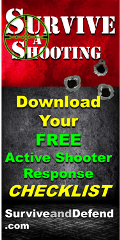
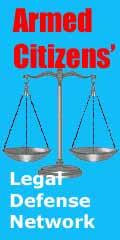
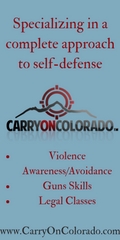
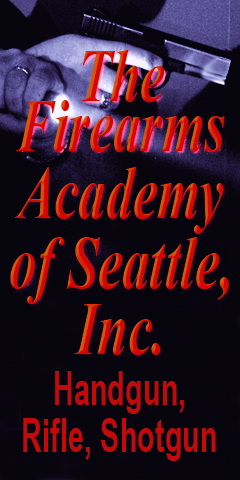
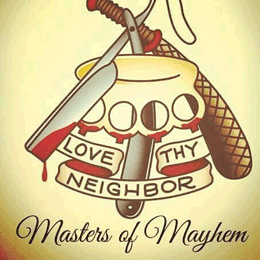

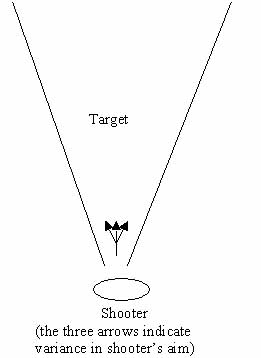 With
all three shooting scenarios, think of whatever direction he
is facing as him standing at the tip of a slice of pie. The
further out it goes the bigger the slice becomes. And that
includes behind the target.
With
all three shooting scenarios, think of whatever direction he
is facing as him standing at the tip of a slice of pie. The
further out it goes the bigger the slice becomes. And that
includes behind the target. 